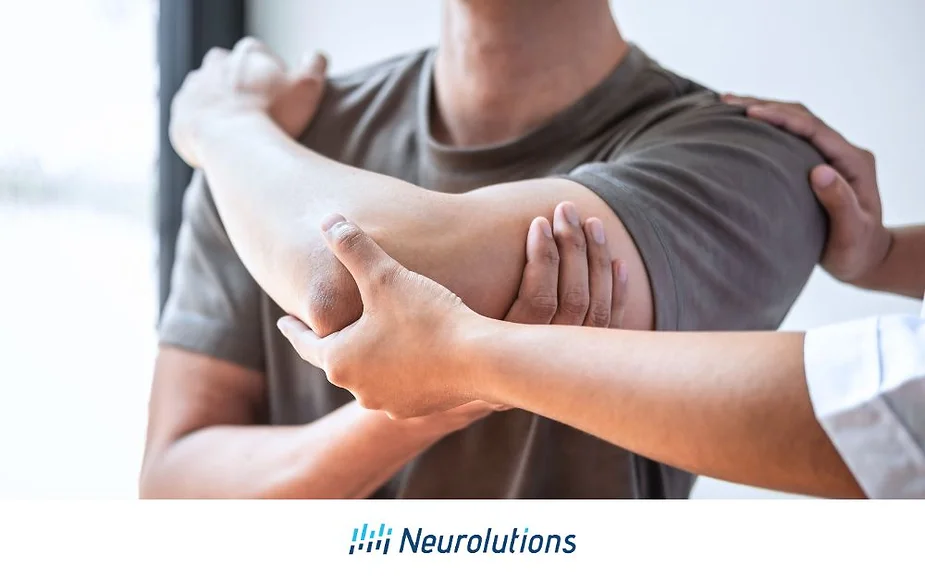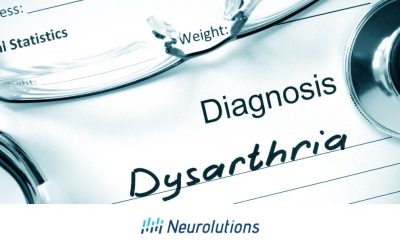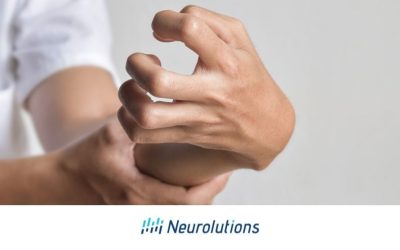Flaccidity, also known as flaccid paralysis, refers to a complete lack of voluntary movement in a limb. After a stroke occurs, there is an interruption of neural connections within the nervous system, which results in hemiparesis or hemiplegia. When a person has flaccidity paralysis in the arm, they cannot initiate any voluntary arm movement. What does this mean? It means the affected arm is not able to move on its own and will generally hang loose due to the lack of muscle function. Moreover, flaccidity is often associated with low muscle tone (hypotonia).
Additionally, for some stroke survivors, the flaccidity stage is the initial period they experience immediately following a stroke, which is the first stage of the Brunnstrom Stages of Stroke Recovery. Brunnstrom Stages of stroke recovery describes the progression of neuromuscular recovery(1).
The Brunnstrom 7 Stages of Stroke Recovery include:
- Stage 1: Flaccidity Stage
- Stage 2: Dealing with the Appearance of Spasticity
- Stage 3: Increased Spasticity
- Stage 4: Decreased Spasticity
- Stage 5: Complex Movement Combinations
- Stage 6: Spasticity Disappears
- Stage 7: Normal Function Returns
It is important to know about the flaccidity stage of stroke recovery; if flaccidity lasts too long without treatment, the muscles can begin to atrophy or decrease muscle size. Atrophy can happen due to decreased muscle activity in the affected arm. Flaccidity and atrophy can negatively affect activities of daily living. In this stage, compensatory strategies are most useful in completing daily activities (3).
Flaccidity Causes
What can cause a flaccid arm? Flaccidity in the arm is caused by nerve damage that prevents the muscles from receiving appropriate signals from the brain, which happens when you experience a stroke. When you experience a stroke, whether it is an ischemic or hemorrhagic stroke, the stroke causes damage to the brain. The location of the stroke will influence the severity of the stroke. Especially, if the stroke occurs in the frontal lobe, specifically in the motor cortex, the lack of blood supply and neural pathways that travels down the spinal cord from the brain to the muscle can cause flaccidity in the upper extremity. The more severe the stroke is, then the more severe the flaccidity.
Some symptoms you may experience during the flaccidity stage include (1):
- Weakness or inability to move the affected arm
- Numbness or tingling in the arm
- Loss of muscle tone (hypotonia)
- Decreased reflexes in the arm
- Loss of sensation in the arm
Medical doctors can conduct specific assessments that help diagnose flaccidity in the arm. Some physical examinations can include (3):
- Manual Muscle Testing
- Clinical Observation
- Sensation Assessments: Light Touch Test
- Modified Ashworth Scale: Tests muscle tone
There is specific imaging the medical doctor can conduct to help diagnose flaccidity in the arm, such as:
- Magnetic Resonance Imaging (MRI)
- Electromyography (EMG): tests the electrical activity of muscle tissue
Treatments for Flaccidity
Can you treat a flaccid arm after experiencing a stroke? The answer is yes! There are multiple treatments that you can do to help with your flaccid arm after experiencing a stroke. The most important part of treating flaccidity in the arm is neuroplasticity. Neuroplasticity refers to the brain’s ability to rewire neural pathways. These new pathways allow unaffected areas of the brain to take control of functions from areas affected by the stroke. The most effective way to activate neuroplasticity is through intensive rehab exercises.
How can we do this with a flaccid arm? Passive Range of Motion! When exercises cannot be performed voluntarily or actively, passive range of motion allows you to maintain range of motion and encourage muscle function.
Passive Range of Motion
Passive range of motion refers to exercises in which your therapist, care-partner, or your unaffected arm moves your arm for you. Even though you are not technically activating the affected muscles, engaging them in passive motion can help stimulate the neural pathways.
Mirror Therapy
Mirror therapy is another great treatment that helps engage neuroplasticity. The purpose of this treatment is to simulate visual feedback and “trick” the brain into thinking the affected arm is performing the task.
Electrical Stimulation
Electrical stimulation encourages electrical communication between the brain and the muscles. This works by sending an electrical impulse directly to your arm muscles, which causes them to contract. Combining electrical stimulation and intensive rehab exercises has shown to be effective in improving function after experiencing a stroke.
Mental Practice
Mental practice engages the same brain regions as physical movement. This can help reconnect your mind to your muscles and overcome flaccidity after experiencing a stroke. Imagining your affected arm moving while your care-partner provides passive range of motion can help boost neuroplasticity and increase your chances of muscle function.
Constraint-Induced Movement Therapy
Constraint-Induced Movement Therapy allows you to focus on the affected limb during exercises and/or during functional tasks. How does this work? This intensive therapy restrains the less-impaired arm for most waking hours, which forces you to use the affected arm while performing your activities of daily living (4).
The Neurolutions IpsiHand
The IpsiHand leverages state-of-the-art brain-computer interface technology to reconnect the affected limb with the unaffected side of the brain after a stroke. The device stimulates neural pathways, encouraging the brain to regain control over your affected hand. This device can be used at home.
In some cases, your medical doctor will prescribe medication for secondary complications of flaccidity. For instance, pain and depression may negatively impact the motivation to pursue rehab.
Living with Flaccidity
Here are some tips if you are experiencing flaccidity in your arm!
- Position of the arm is important: supported on a pillow, tray, or armrest are ideal positions
- This helps decrease pain swelling while preventing shoulder subluxation
- Weight-bearing to the affected arm: can be done on a mat, a table, a ball, or side of the bed
- Passive range of motion in a pain-free zone
- Compensatory strategies for daily activities
- Muscle facilitation: tapping, electrical stimulation, quick stretch
- Attempting to move the affected arm as much as possible!
There are some risk factors that are associated with living with flaccidity in the arm. In the absence of treatments, you may experience contractures in the arm due to immobility. Moreover, the muscles can begin to atrophy, and spasticity can occur after the flaccidity stage of stroke recovery. It is important to stay active and keep moving!
You may have to change your lifestyle and strategies for completing activities of daily living. Make sure you ask for help when you need it. Flaccidity in the arm after experiencing a stroke can be life-changing. For most stroke survivors, this stage may not last very long, although some may feel that it lasts for an extended period of time. However, with the right medical and support team, you can live a long and successful life. You can improve your outcome with neuroplasticity using many different rehabilitation techniques! Talk to your medical team and start early in your stroke recovery journey!
References:
- https://www.flintrehab.com/flaccidity-after-stroke/
- https://www.stroke-rehab.com/hypotonia.html#:~:text=Hypotonia%20is%20low%20muscle%20tone,the%20limbs%20to%20prevent%20injury.
- https://www.ncbi.nlm.nih.gov/pmc/articles/PMC3524381/
- https://jamanetwork.com/journals/jama/fullarticle/203876
- https://www.ahajournals.org/doi/full/10.1161/01.STR.0000087172.16305.CD
- https://www.youtube.com/watch?v=riXPmXDRz_Y&t=20s




